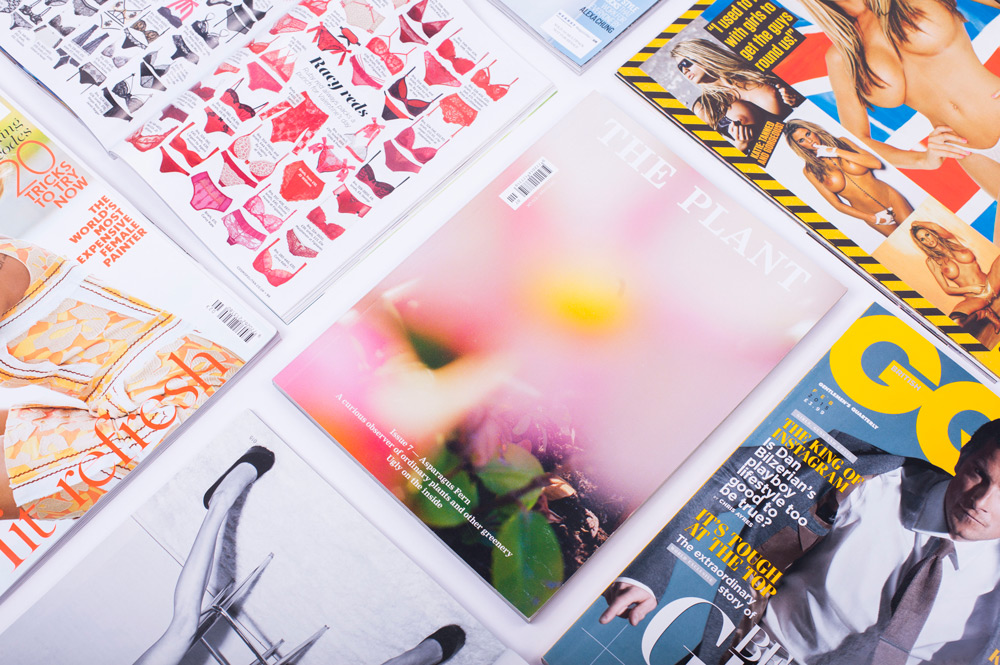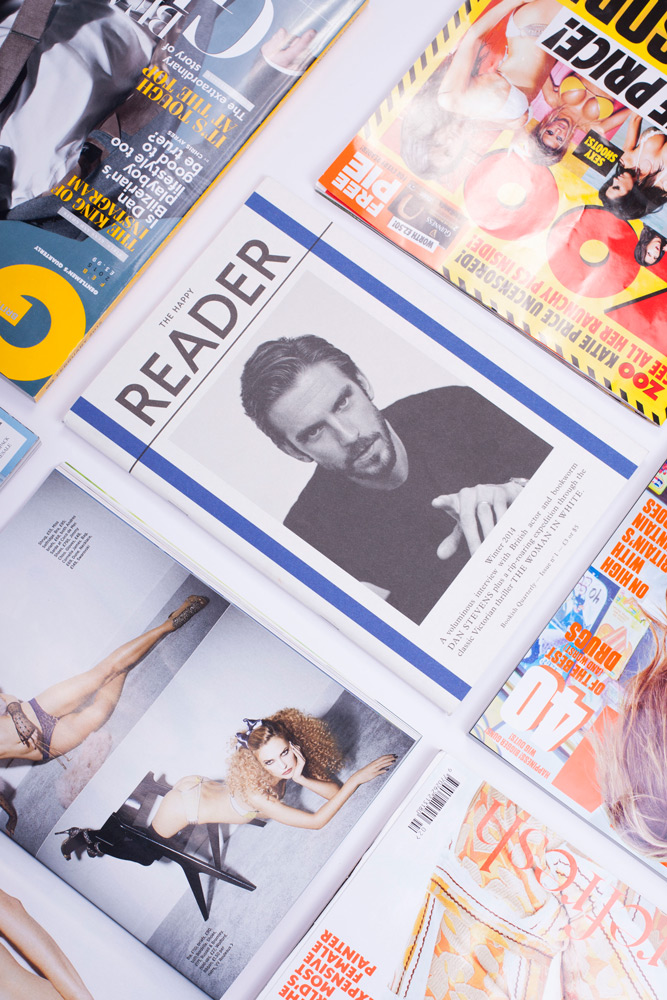The Gender Issue
The age of the lads’ mag is over with new, ‘gendered’ publications taking a far more considered, artistic and socially conscious approach to their subject matter

In the late 1990s, Loaded magazine was the brash, rowdy and wildly successful epitome of the British lads’ magazine. Half-naked women adorned its covers and crude, funny blokes filled its pages. At its height, in the second half of 1998, it sold an average of 457,318 copies a month. By 2010, that figure had plummeted to 53,591. Today, Loaded barely limps on in a re-booted edition and its offspring, Nuts magazine, was killed off in 2014. In the same year, Loaded’s American soulmate Maxim was sold for between $10m and $15m, a fraction of what it was worth in 2007 when it was sold, along with Blender and Stuff, for $250m. FHM stopped publishing in the US in 2006.
The era of the lads’ magazine is over, and while gendered publications continue to occupy much of the mass-media market, cheap high-quality publishing software and the ability to reach readers on the internet mean that we’re seeing a proliferation of independently produced titles that have moved beyond gender.
The big, traditional magazine as we know it grew out of the post-war consumer boom. With the Western world growing richer, a larger space for lifestyle publications opened up. “These were very commercial beasts that dealt in mass socio-economic groupings,” according to Jeremy Leslie, the creative director of MagCulture, a website that reports on the magazine industry.
These mass groupings often meant fashion for women and ‘men’s stuff’ – naked women, the trappings of a financially successful life – for men. This mass-market approach, says Leslie, meant that magazines could be ‘very coarse’ and, because they were aspirational, their focus was often on youth, wealth and a definition of gender that was rigidly drawn.
While consumer-media companies dreamt of a magazine that could be sold en masse to men and women, they found success with titles that could be easily sold to advertisers. Women’s and men’s magazines supposedly have easily identifiable demographics that help attract them to advertisers.
Thus, Loaded’s young male readers could be trusted to spend their disposable income on sportswear and records and Vogue’s more sophisticated, aspirational female readers would buy fashion and beauty products. “In the 1990s, advertising was sold against a particular type of person, but the boundaries are never as hard as publishers would like us to believe,” says Steve Watson who runs magazine distributor, Stack, which sends different independent titles to subscribers each month.
Watson points out that while gendered magazines “got fat off advertising in the 1990s”, those days have now gone. With far less advertising revenue coming in, the grip that such gendered magazines have on the marketplace has been significantly loosened. “Smaller magazines are less aspirational. They are more about community building and a lot of that is cross-gender,” adds Leslie.
So while the big beasts are struggling, the little beasts are rising. Printing well-designed magazines used to be a corporate concern because of the money and expertise needed. Now, digital printing software is easy to use and means that you can sit in your bedroom and produce magazines that are as well designed as Elle or Vogue. “Adobe Creative Cloud keeps you up to date and can be rented for £30 a month,” says Watson.
“It has allowed a whole wave of new magazine-makers to print digitally at much higher standards.” Independent book stores still do excellent work stocking new magazines, but these can also be sold and funded (using crowdfunding sites like Kickstarter and digital newsagent Newsstand). Sites like Newspaper Club also allow the creator to print as few of their own newspapers as they want.
With magazine production now cheaper and easier than before, writers and designers are free to follow their own interests, which rarely fit into the commodified, gendered world of mainstream magazines. For example, Benji Knewmanis written by two Latvian women from the point of view of a man in his 30s, who is “trying to be genuine, and it seems he sometimes manages”. It’s written in Latvian and English, can be ordered online and is unlike any magazine on the mass market.
The new wave of magazines also hits back at accepted notions of gender. Bertie Brandes started The Mushpit with her friend Charlotte Roberts “because we remembered reading magazines that we actually liked when we were growing up but couldn’t find any to suit us in our late teens/early 20s”.
Alongside modern women’s magazines such as Riposte and Girls Like Us, The Mushpit offers a smart, personal vision of gender that is never reductive. Brandes says she hopes it “represents the frustration we feel about the imagery we’re presented with on a daily basis...we’re so exhausted by female nudity being either channelled through a commodified male gaze or simply not at all”.
A number of new men’s magazines also offer a more fluid vision of their gender. LAW (‘Lives and Works’), is something like a new lads’ magazine. Its creator John Holt has said that it’s designed to be read by his “mates who work hard all day and drink in the pub.” Its cover stars are not naked women, though. They are usually men with interesting faces and interesting stories, shot in portrait from the chest up. The magazine is concerned with British identity and with stories the mainstream media has overlooked. It gives life to – and provides a record of – British communities whose voices are often not heard and whose styles are deemed unworthy of mass attention. In doing this, it provides a nuanced depiction of masculinity that is engaging to male and female readers.
TALC is another magazine providing a less aggressively gendered twist on a traditionally gendered model: the erotic magazine. Edward Vince, its editor-in-chief who predicted the genre’s demise, says that TALC “began life as a new take on lads’ mags.” He says TALC “evolved through its production to become an adult magazine designed to appeal to all, not specifically men.”TALC is “very much about an appreciation of beauty,” he says, and this is reflected in its readership, which is evenly divided between the sexes.

This equal readership provides evidence of a long-standing truth, which is that women have long read men’s magazines, and vice versa. James Brown, who co-founded Loaded and now runs the Sabotage Times, says that his new venture, despite boasting plenty of football coverage, also has an equal gender-split in its readership. This is something he’s pleased with. Brown doesn’t long for a return to Loaded’s hey day and says that the internet has allowed what’s interesting to come to the fore. “I’m sure that sites like The Debrief (an online magazine for women) or Telegraph Men are probably read by lots of men and women respectively because they have interesting pieces,” he says.
Brown also points out that the internet means that what we read can be found here, there and everywhere: “I think the move from print to digital means it’s easier for readers to read exactly what they want, regardless of where it’s published. Social media allows you to follow a gender-specific title you wouldn’t buy and just cherry-pick stories or films you’re interested in.”
The kinds of things that gendered magazines specialised in for a while – listmaking, brash humour, secrets, lies, gossip and sex – don’t benefit so much from being in a magazine as opposed to online
Much of the content associated with highly gendered magazines has migrated to the internet. As Seb Emina, editor of Penguin magazine The Happy Reader says, “the kinds of things that gendered magazines specialised in for a while – list-making, brash humour, secrets, lies, gossip and sex – don’t benefit so much from being in a magazine as opposed to online. So a lot of the new (and old) magazines are being careful to print material that feels like it really warrants those high design and editing standards.” The internet – in the form of free, endless porn – has also arguably been behind the demise of magazines like Nuts.
Websites have borrowed some old article-models from print to drive traffic, but young magazine-makers have also taken the aesthetics of web design into print. The democratisation of print publishing has ushered in a new generation of editors and designers who began on sites like Tumblr but have ended up feeling the age-old pull of print; the desire to hold something in your hands. They have also seen the explosion of niche-interest sites on the web and reinvented them for the page, resulting in magazines ranging from The Plant – ‘the magazine that loves the leafier side of life’ – to The Gourmand – ‘where food meets art’.
There is still a great deal of misogyny and simple-minded gender identification in the mainstream media but, thanks to these new contemporary titles, which dare to look beyond the prescribed confines of the mass market, our media as a whole is becoming broader, more personal and more interesting. It’s almost as if we’re not completely defined by our gender.


